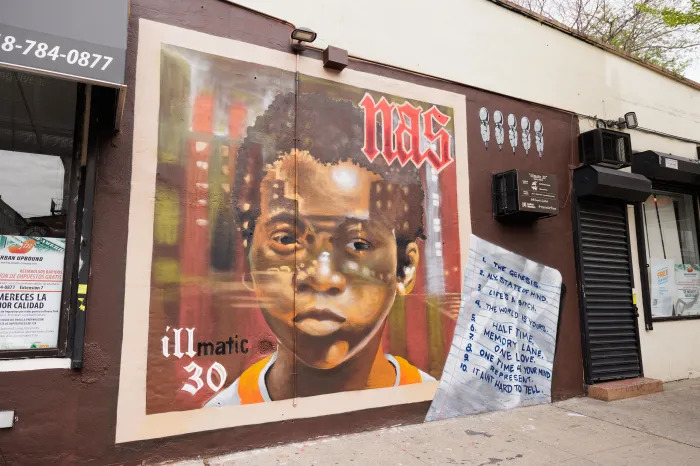By Tammy Scileppi
Imagine and explore. Learn and wonder. All things are possible at the New York Hall of Science in Flushing Meadows Corona Park as the highly interactive Animation exhibition, which opened in March, amazes visitors through Sept. 2.
The 6,000-square-foot exhibition features popular Cartoon Network characters as a backdrop to exciting installations showcasing six thematic areas, like History and Art in Motion. Families can enjoy the screening room and cartoon museum, where clips of cartoon favorites are shown daily, while artifacts like celluloids, models and storyboard drawings reveal animation’s interesting back story.
Animation’s history comes alive at the old-fashioned Penny Arcade, where museum visitors can have fun “cranking” out moving pics using a vintage mutoscope or spin 3D objects into a single animation using a praxinoscope.
Since 1889, when super-inventor Thomas Edison’s kinetoscope jumpstarted the medium by projecting a 50-foot length of film in about 13 seconds, the journey of animation has been a fascinating one, filled with many “Aha!” moments and a steady progression of discoveries that led to today’s computer-generated animations.
In an attempt to creatively manipulate motion, Edison’s frustrated successors took the torch and experimented with new ideas. In 1906, Stuart Blackton’s “Humorous phases of funny faces,” created by drawing comical faces on a blackboard and filming them, was celebrated as the first animated film.
In 1914, Winsor McCay’s 10,000 drawings resulted in an actual cartoon. “Gertie, The Trained Dinosaur” drew gasps of disbelief when it was shown as a film in theaters, and then as the first multi-media event of its time, as McCay interacted with Gertie on stage.
“Animation gives a behind-the-scenes look at a medium that amazes and inspires people,” said the museum’s Dan Wempa, vice president of external affairs. “The exhibition takes you from concept to finished product. You’ll learn about storyboarding, character design and drawing techniques.”
After dramatic strides that ultimately turned the medium on its head, Felix the Cat took animation one giant step further in 1920, becoming the most popular character and series of the time, and a beloved classic to many modern fans. The feline phenom paved the way for another, more profitable concept: the merchandising of animated characters.
In 1923, Walt and Roy Disney founded Disney Brothers Cartoon Studio.
Ask a group of hip kids about Mickey Mouse, Donald Duck and Porky Pig, and they’ll probably tell you they’ve got nothing on Scooby-Doo, The Powerpuff Girls, The Flintstones, “Dexter’s Laboratory,” and Johnny Bravo — some of Turner Broadcasting’s Cartoon Network’s well-known characters and shows. At the museum’s “Dexter’s Laboratory” exhibit, visitors probe into the science and technology that make animation possible.
Remember “Steamboat Willie?” In 1928, Mickey Mouse found international fame in this role, as the first successful sound animated film launched the Disney studio of today. Then, in 1934, that unforgettable Donald Duck voice we all know and love, debuted on Mickey Mouse’s NBC radio program.
Porky Pig debuted in 1935, starring in “I Haven’t Got a Hat.” And did you know that Looney Tunes were in black and white until 1943 when they were colorized?
“The exhibition explains why we see animation, and the concept of why these images, which are really just still pictures, appear to move. It explores how our eyes and brain perceive things and make inanimate pictures look animated,” said Sookram Ramsaroop, manager of Science Career Ladder Operations and Training, the museum’s education/employment program that trains high school and college kids on how to explain science on the exhibit floor.
He added, “People are drawn to the exhibition because it includes a lot of bright, colorful images that are familiar. There are modern-day cartoons, along with classic cartoons, so it appeals to people of all ages.
“The exhibition will give you a new appreciation for cartoons and animation in general.”
At the Sound and Stage area, 10-year-old Jason Saunders, from Astoria, explored sound and phonetics with characters from television shows “Chowder,” “Ben 10: Alien Force” and “Kids Next Door.” He said he was learning how to match phrases to characters’ different mouth shapes, and even added his own voice to a silent animation.
The museum, at 47-01 111th St., is open 9:30 a.m. to 2 p.m. Tuesday to Thursday, 9:30 a.m. to 5 p.m. Fri, and 10 a.m. to 6 p.m. on weekends through June. In July and August, the museum is open 9:30 a.m. to 5 p.m. Monday to Friday, and 10 a.m. to 6 p.m. on weekends. Admission is $11 for adults and $8 for children (ages 2-17). Visit www.nysci.org or call (718) 699-0005.

































